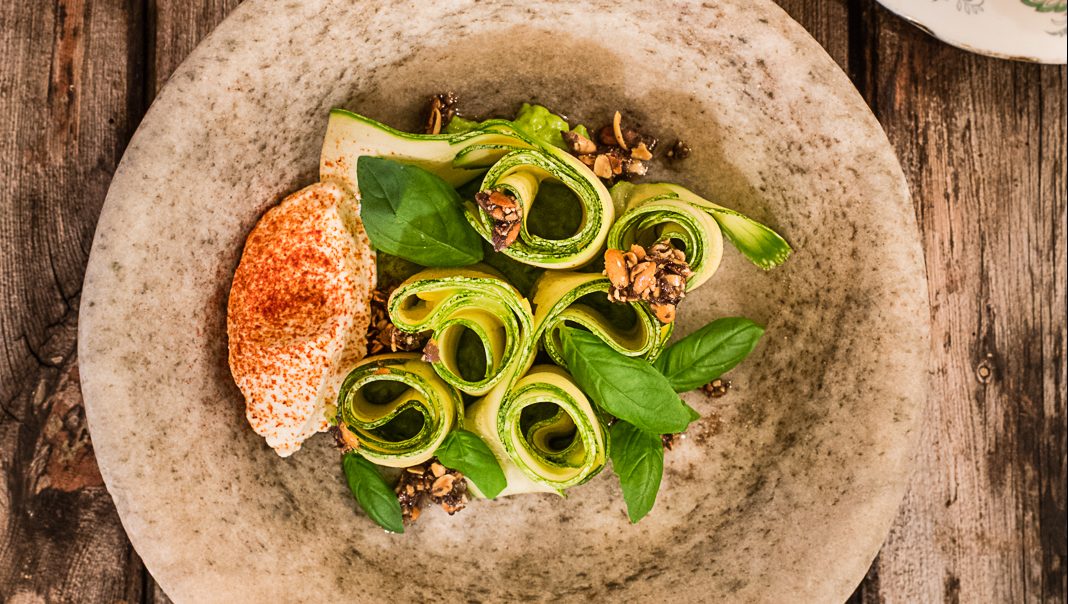Last week, the American food writer and author of Salt, Fat, Acid, Heat, Samin Nosrat, visited the US Embassy for an evening of culinary diplomacy. She joined three of our own food gurus, Jimi Famurewa, Melissa Thompson and Asma Khan, to discuss changemakers in hospitality, touching on how the sector is often vital in championing diversity, societal progress, and in celebrating a sense of place.
Communities in Britain are all the better when they are inclusive – and there is perhaps no better lens to view them, and the people that make them what they are, than food. The complexities of history may be charted through the dishes cooked in towns and cities; the evolution of regions and the demographics that fuel them, ever-shifting, can be considered in the bars and restaurants through each one.
More acutely put, across Britain are areas that have benefited from migration. I’ve lived in various cities in the UK, and in London especially have seen and experienced first-hand the food and drink brought about by unbridled movement.
Much of my time in London has been spent in the south-west, hardly believed to be the most vibrant and diverse, and yet just down the road in Tooting there is exceptional curry; in Brixton, a famous Caribbean community – how I adore the codfish fritters at Fish Wings & Tings in the Village; in Stockwell, Little Portugal, a haven for post-football food and beer; and in Balham, a small but prominent Polish diaspora, always ready and willing to dish out pierogi.
A sizeable Irish population, meanwhile, has been present for many years. Today, hospitality is replete with Irish-born chefs, restaurateurs and front-of-house staff. Names have appeared in these pages frequently – Richard Corrigan, Anna Haugh, Oisín Rogers (soon to open what will arguably be Soho’s grandest and most ambitious pub, The Devonshire) to name three of the best-known – and indeed the Irish workforce here, such is their significance, are affectionately known as the “Murphia” in food circles.
Another Irish star in London is Robin Gill, who catered for the post-Embassy panel talk at his Nine Elms restaurant, Darby’s. It is a beautiful dining room, and in good weather, the glass doors open out on to a garden-like terrace, overlooking the Embassy, with ponds and foliage.
When Gill is on song, his food is monumental. It is transportive. It is a song of ingredients, promise and space. Is it Irish food? I don’t know, but it hints of his home and is generous. Last week, we feasted on Carlingford oysters; crudités and cod’s roe; Cantabrian anchovies on toast; and ham hock and Gubeen – a glorious Irish cheese – gougeres.
Later came Celtic scallops, and then lamb from Yorkshire served with a hot pot using the shoulder, straddled by wafer-thin strips of potatoes, which curtained the meat like the soft petals of a flower outside. A side of grezzina courgettes and the plumpest of peas made the evening stupidly and embarrassingly resplendent.
Gill didn’t say much when introducing the menu, talking only of the importance of using good produce. I don’t suppose many of us will be putting on a feast such as his – paid for by the Californian tourist board – but we might all listen to his chatter on seasonality. In which case, let’s do some courgettes.
In this recipe, the chef serves them simply, with goat’s curd and honey. It’s a fantastic plate of food, fresh and summery, and ideal for the weather.
Courgette, goat’s curd and honey
Serves 4
For the dressing
125g pumpkin seeds
50ml vegetable oil
50ml honey
10g white miso
Pinch of Maldon sea salt
Toast the pumpkin seeds in the oil until really golden. In a separate pan, caramelise the honey to a dark golden colour. Put the seeds with their oil, the honey and miso into a blender or food processor and pulse until combined but still retaining a coarse texture. Season with salt to taste. Allow to cool to room temperature.
For the courgettes
2 courgettes
Fresh lemon juice
Olive oil
5 Nocellara del Belice olives, stoned and sliced
Smoked paprika, for dusting
200g goat’s curd
Lemon zest
Maldon sea salt and freshly ground black pepper
Basil leaves
Slice the courgettes thinly lengthways using a mandolin or peeler. Season with salt, black pepper, lemon juice and olive oil to taste. Roll the courgette slices and place some rolls on each plate. Sprinkle over the olive slices. Season the curd with some lemon zest, juice, olive oil, salt and pepper. Add a spoonful to the side of each plate. Dust the curd with a little smoked paprika. Finish each plate with the reserved basil leaves and pumpkin seed praline dressing.




